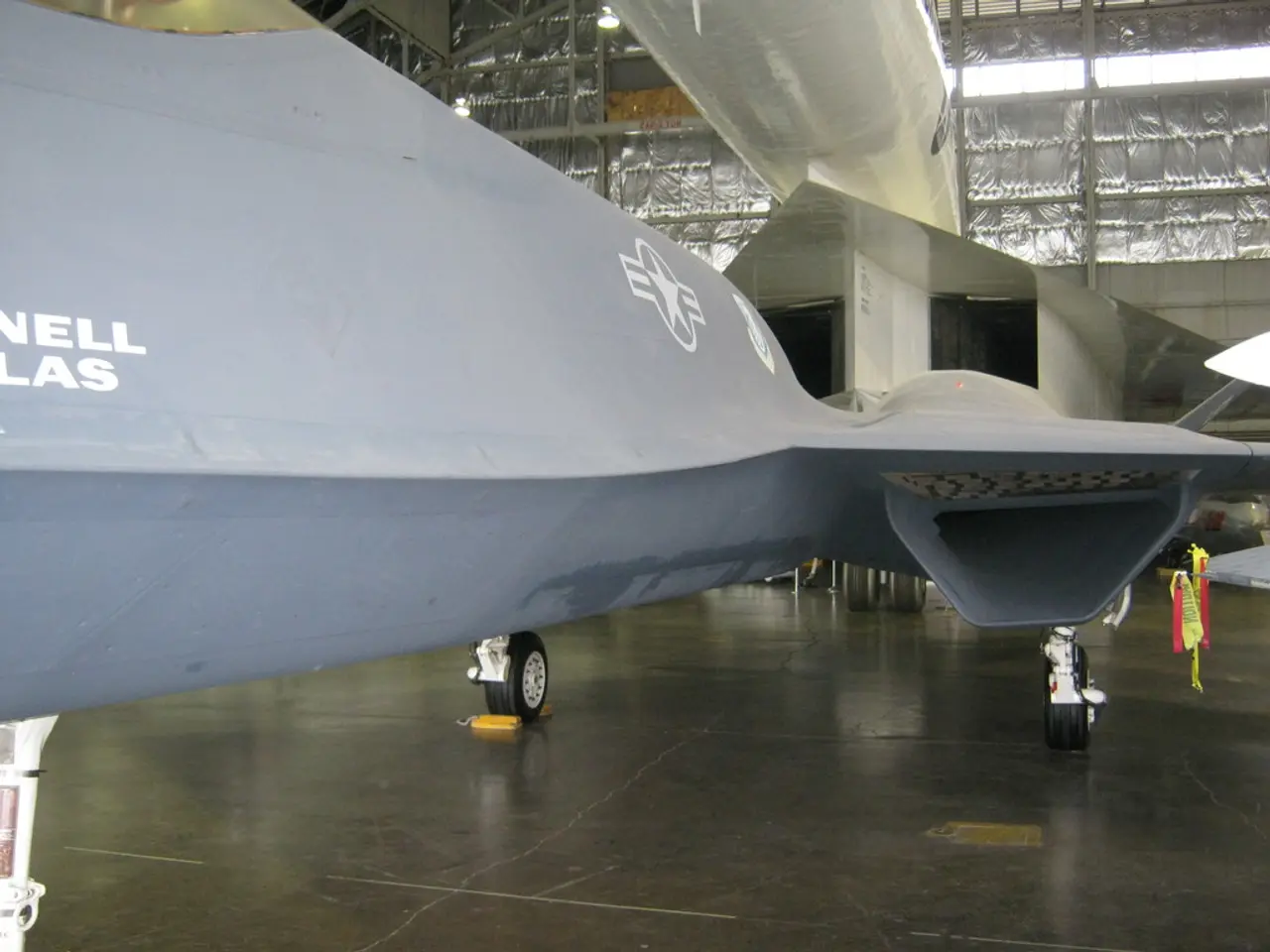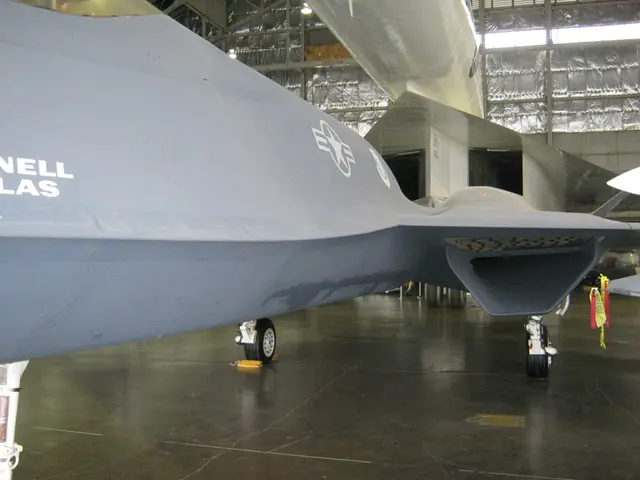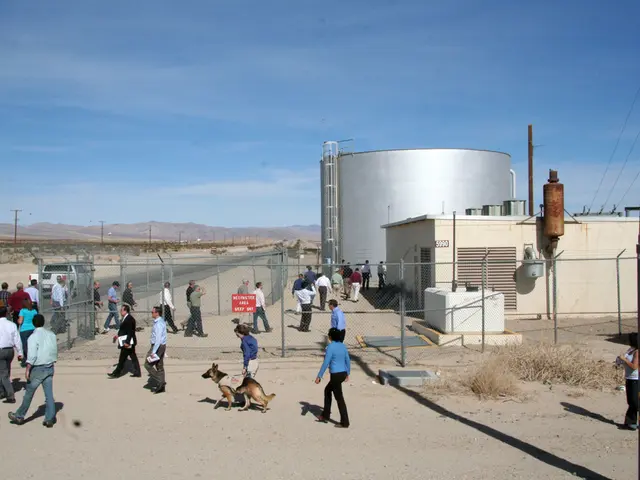Tragedy in Tynda: An-24 Crash Claims 48 Lives
Aircraft disaster in Russia claims numerous lives
A passenger plane, an Antonov An-24 operated by Angara Airlines, crashed on July 24, 2025, while approaching the town of Tynda in Russia's far eastern Amur region. The aircraft, which took off from the city of Khabarovsk, was en route to Tynda and had up to 49 people on board, including passengers and crew [1][2][4].
The plane disappeared from radar screens just before reaching Tynda, and the wreckage was discovered burning by a search and rescue helicopter within several miles of the airport. No survivors were found, and the death toll was confirmed as 48 [1].
The Russian aviation industry has been grappling with challenges due to Western sanctions imposed because of the 2022 invasion of Ukraine ordered by Kremlin leader Vladimir Putin. The supply of aircraft and spare parts to Russia is banned, leading many airlines in the country to use increasingly older aircraft and to use grounded aircraft for spare parts [6].
The An-24: An Aging Fleet with Safety Concerns
The Antonov An-24 is a twin-engine turboprop regional airliner and freighter designed in the Soviet Union in the late 1950s. It was widely used across Eastern Europe, Central Asia, Africa, and other regions during the Cold War and beyond, primarily for domestic and regional routes. Although many have been retired, some remain in commercial service, especially in remote areas with less developed infrastructure [3].
The An-24 fleet is aging, with many aircraft operated well beyond their original service life. This increases the risk of mechanical failure and corrosion [2]. Russia’s remote regions often lack advanced maintenance facilities, and economic pressures can result in deferred maintenance and cost-cutting measures that compromise flight safety [2].
There have been persistent concerns about pilot training, working conditions, and cultural issues such as alcohol abuse, which some observers allege are prevalent among aircrews in the region [2]. The An-24 has been involved in numerous crashes over its operational history, with causes ranging from mechanical failure to pilot error and adverse weather. This latest incident adds to the safety concerns about older Russian aircraft operating in challenging environments.
Investigation into the Crash
Russian authorities, including the federal aviation agency Rosaviatsiya and a dedicated investigative committee, have launched a formal inquiry into the crash [1][2]. While the immediate cause remains unknown, officials are compiling passenger and crew manifests, analyzing black box data, and examining the wreckage for signs of technical failure or other contributing factors.
The current investigation is focusing on the suspicion of human error as the cause of the crash. There is speculation that the crew may have misjudged the altitude under difficult weather conditions and possibly struck a tree top [5]. However, these are only theories, and the official findings are yet to be released.
Criminal proceedings have been initiated against the airline Angara for violating safety regulations following the crash [7]. Corruption is widespread in Russia, and investigations are often only formal, raising questions about the transparency and thoroughness of the inquiry.
Memorial and Mourning
Local officials declared three days of mourning, and rescue teams—comprising more than 50 people and 10 pieces of equipment—arrived at the scene to assist in recovery and investigation [1]. The tragedy has left a deep impact on the community, with many paying tribute to the victims and calling for improvements in air safety in remote Russian regions.
Key Facts
| Aspect | Details | |-----------------------|--------------------------------------------------------------| | Date | July 24, 2025 | | Location | Near Tynda, Amur region, Russia (far east) | | Aircraft | Antonov An-24, operated by Angara Airlines | | Route | Khabarovsk to Tynda | | Fatalities | 48 (no survivors reported) | | Ongoing Investigation| Russian federal authorities | | Historical Context | An-24: Soviet-era turboprop, aging but still in service | | Safety Concerns | Aging fleet, maintenance, human factors, past accidents | | Cause of Crash | Under investigation (suspected human error) | | Legal Consequences | Criminal proceedings against Angara Airlines for safety violations |
The An-24 crash in Tynda serves as a stark reminder of the challenges faced by the Russian aviation industry and the importance of ensuring air safety, particularly in remote regions. The ongoing investigation will be crucial in identifying the causes and informing future safety measures. Until those findings are released, the aviation community and the public remain focused on the tragedy and its broader implications for air safety in Russia.
- The Russian aviation industry, burdened by Western sanctions, has been using increasingly older aircraft due to a lack of aircraft and spare parts.
- The Antonov An-24, an aging Soviet-era turboprop, has been involved in numerous crashes over its operational history, with causes ranging from mechanical failure to pilot error and adverse weather.
- The Russian federal aviation agency Rosaviatsiya, along with a dedicated investigative committee, has launched an inquiry into the An-24 crash in Tynda, focusing on human error as a potential cause.
- Aircraft accidents, such as the An-24 crash in Tynda and car-accidents, fall under the category of general news and crime-and-justice, with查outy impacting both the affected communities and policy-and-legislation.
- Aerospace, finance, and politics are interconnected, as Western sanctions imposed on Russia due to war-and-conflicts like the 2022 invasion of Ukraine have repercussions for the Russian aviation industry's ability to maintain and upgrade its fleet.
- Fires, accidents, and crashes can occur in various industries, highlighting the importance of stringent safety policies and regulations to minimize potential losses and save lives.








